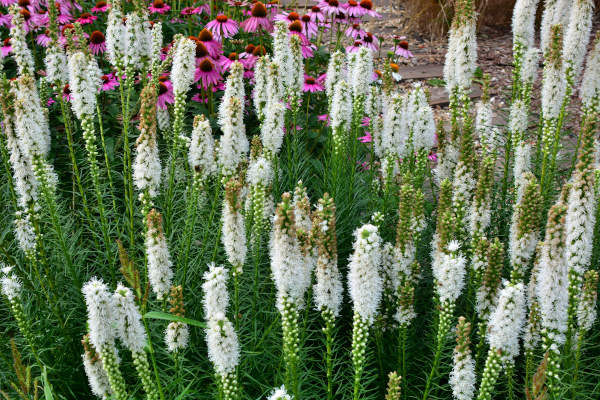How to grow Liatris
Originating from dry stony ground in the prairies and open woodlands of North America, liatris is a summer-flowering perennial with upright spikes of fluffy, bottlebrush flowers. These are highly attractive to bees and butterflies, and unusual in that they open from the top downwards. The foliage of liatris is narrow and grass-like, borne in basal tufts and alternately up the flower stems.
This striking member of the daisy family grows from a corm, though is often referred to as a bulb. It is valued for its long flowering period and distinctive, almost exotic-looking flowers.
Liatris is also known by the common name of ‘gayfeather’.

Zantedeschia is a genus of flowering plants from the family Araceae and is native to southern Africa. With a rich history dating back to the Ancient Romans, these deciduous or semi-evergreen perennials have been used as a symbol of celebration. Zantedeschia was Named after Professor Giovanni Zantedeschia, an Italian botanist.
There are two main forms of Zantedeschia: hardy and tender. Hardy forms of the plant can be grown outdoors, enjoy moist soil and full sun or partially shaded conditions - these are known as Arum lilies. Tender forms of Zantedeschia prefer being grown in containers or pots and should be brought inside over the winter - these are known as Calla lilies.
With tuberous flora in all colours from whites, yellows and oranges to deep reds and purples, Zantedeschias are not to be overlooked in any garden, as long as they have sufficient sunlight to grow in.
Ready to learn more about growing Zantedeschia? Read on for all there is to know...

Key Information
Soil pH
Position
Hardiness

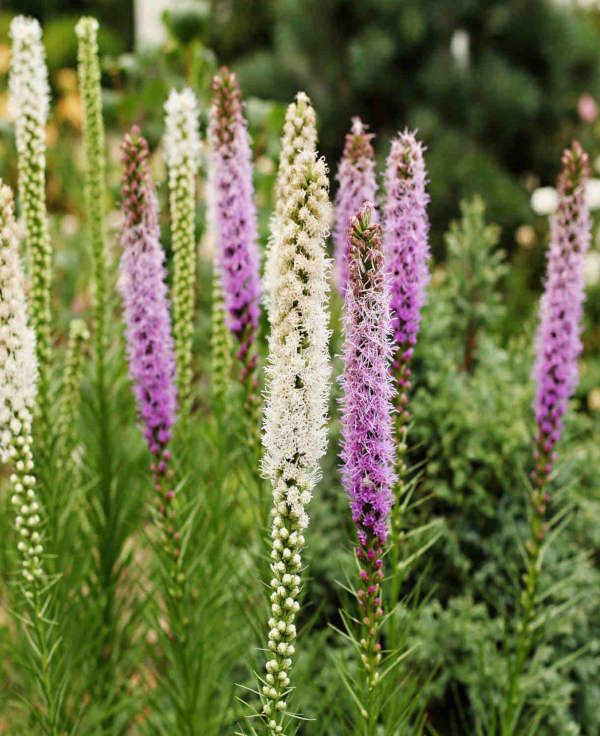
Where & when to plant Liatris
Position- Full sun is essential
Soil- Moist yet well-draining (though drought tolerant once established). Avoid winter waterlogging.
Flowering Period- Summer
Hardiness- Hardy to -20°C and beyond
For best results, plant in autumn or spring. An autumn planting is suitable for those gardening in mild conditions, (broadly speaking, the southern half of the UK). For those liable to very cold winters it is best to wait until spring, (generally the northern half of the UK). You may find spring-planted liatris flower sparsely in their first year, though from year two onwards there will be no difference.
These striking flowers are ideal for adding summer-long vertical accents to the middle to back of a border, or a wildflower meadow. Attractive seedheads and stiff stems mean they also provide good winter structure; something to consider when choosing a spot. Liatris will grow happily in a container.
How to plant Liatris
In the ground
- Clear the chosen area of weeds.
- Dig a planting hole several times larger than the root ball. If your soil is moist, add plenty of sand or horticultural grit to the planting hole and mix thoroughly. Avoid heavy, clay soil.
- Place the plant in the hole, ensuring the top of the root ball sits level with the surface of the soil. Too low and the plant may rot, too high and the roots can dry out.
- Backfill with soil and firm in gently.
- Soak well with water.
- Mulch around the base with horticultural grit.
In a container
- Choose an appropriate container. We recommend one with a top diameter of around 50cm. Ensure there are plenty of drainage holes in the bottom.
- Use a good quality potting compost with plenty of horticultural grit mixed in, and, if not already present in the compost (check the description on the bag) some slow-release fertiliser granules.
- Start by partially filling the pot with compost; enough so that when placed on it the upper surface of the root ball is about 3cm lower than the top of the pot.
- Infill all the space surrounding the root ball with compost, firming down with your fingers then adding a little more so the plant is held tight.
- Pick up the pot (if you can!) and lightly tap on the potting bench or ground a few times to help further settle the compost around the plant.
- Soak well with water.
- A mulch with horticultural grit will look attractive and help to prevent a ‘cap’ or crust forming on the top of the compost (something container plants can suffer due to the artificial nature of their watering).
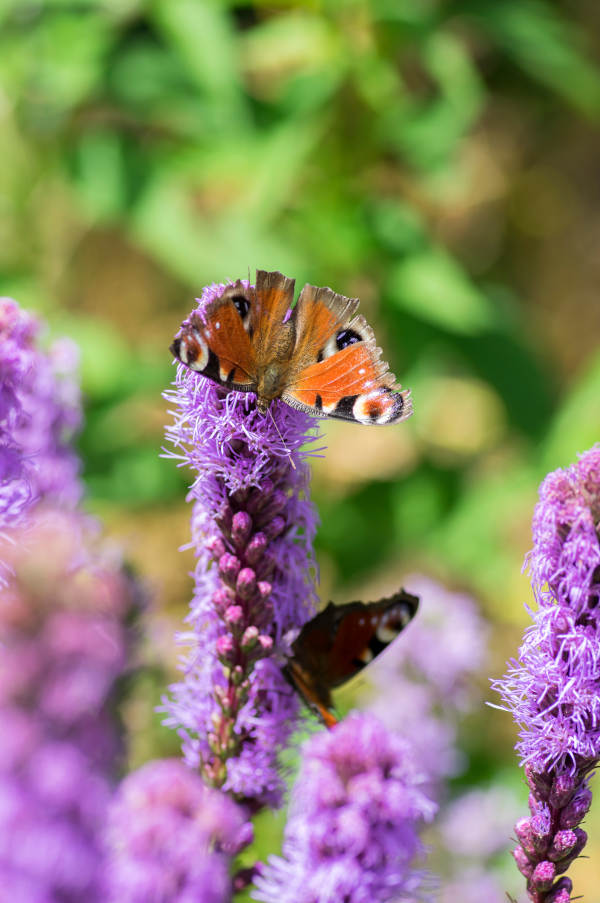
What to plant with Liatris
The colour and form of liatris mixes easily with all manner of planting styles, though it is in a naturalistic prairie scheme we love it the most. Follow the lead of Piet Oudolf and combine with lythrum, allium, pennisetum, echinacea, stachys, and veronicastrum.
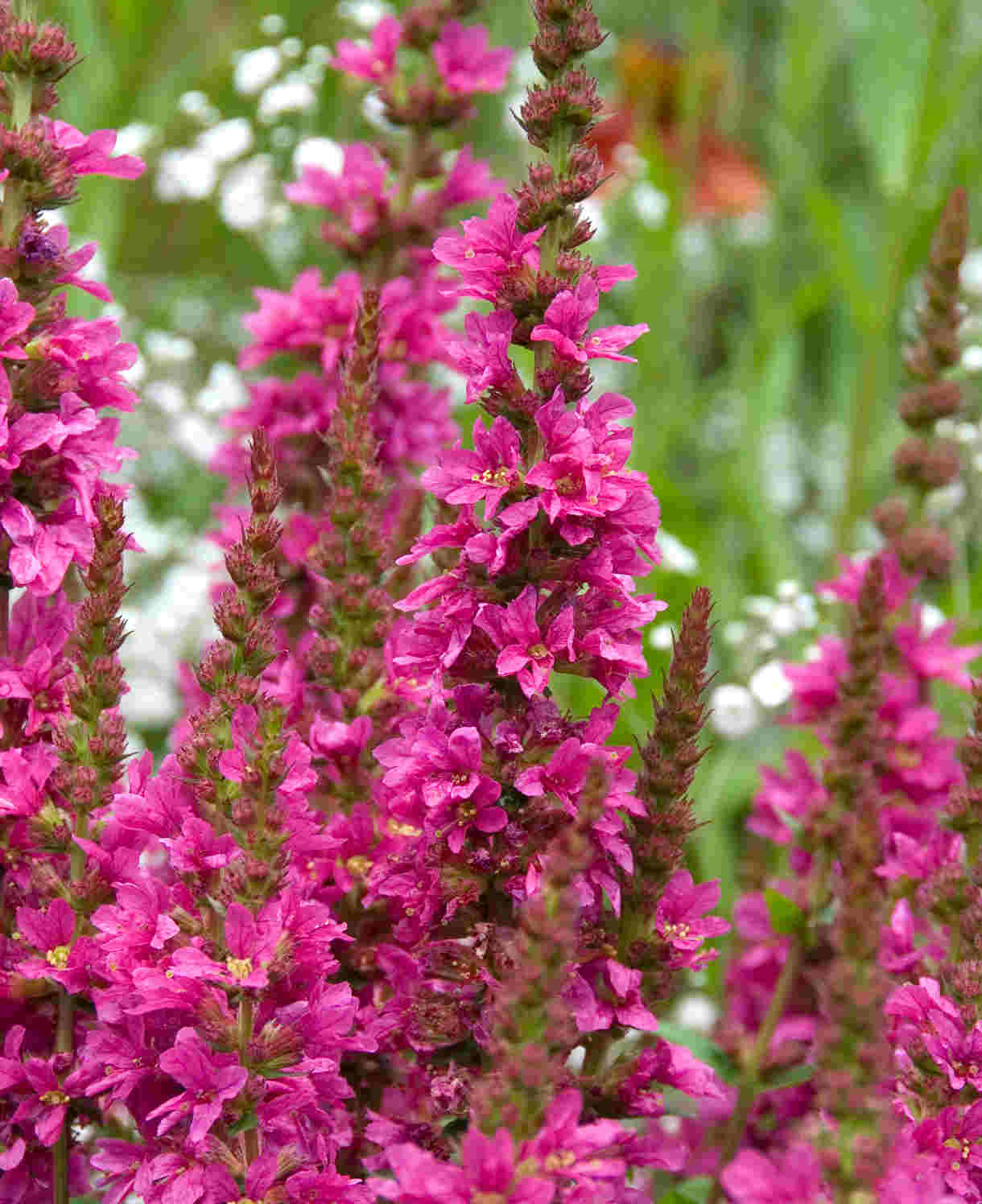
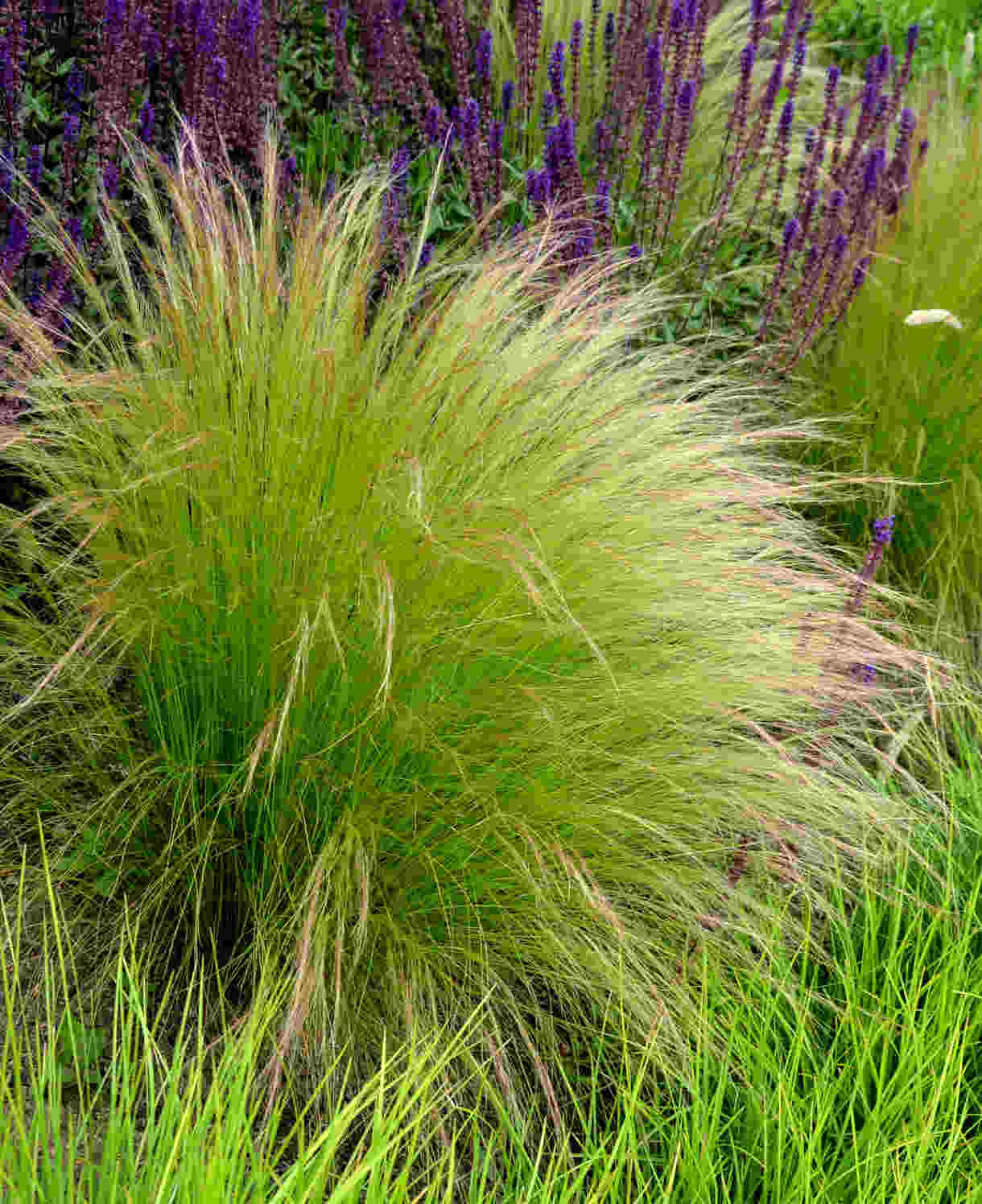
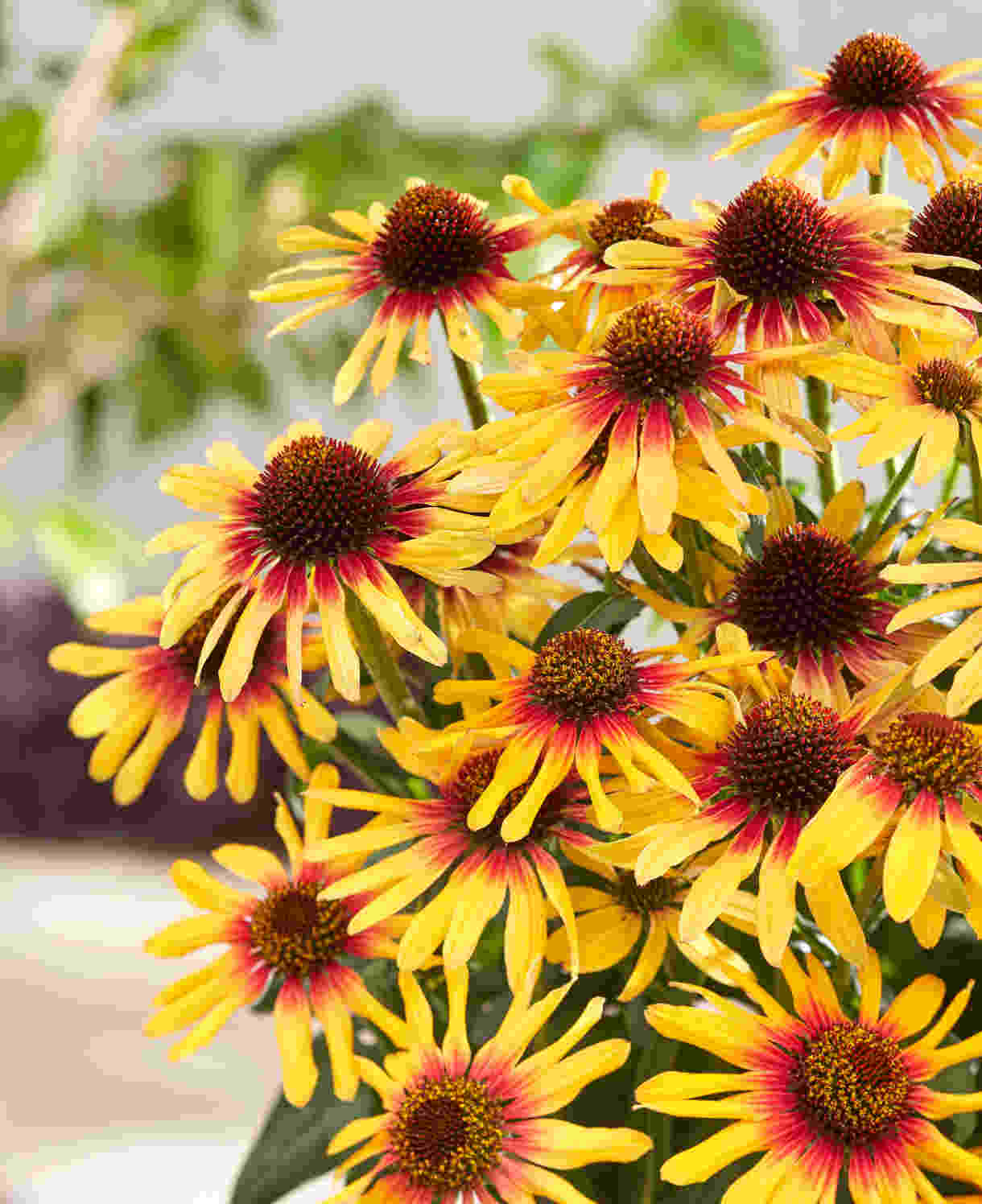
How to care for Liatris
Pruning and Deadheading
Deadhead regularly throughout the blooming season to encourage the formation of new flowers.
Try to resist the temptation to cut back in autumn as the seedheads last extremely well as winter interest. Cut back in early spring.
Watering
Water well until established, then in dry spells throughout the first year. From year two onwards, liatris has a good tolerance to drought.
Container grown liatris will need watering throughout the growing season. Allow the top few centimetres of compost to dry out between soakings.
Cold Protection
Liatris is as hardy as they come (to -20°C and beyond), and therefore does not require any protection over winter.
Pests and Diseases
Liatris is generally trouble-free.
How to propagate Liatris
The quickest and easiest way to propagate liatris is to divide it in spring when the new growth first starts to emerge. As well as providing new plants to distribute though your garden, this also maintains the health and vigour of existing specimens and controls their spread.
- Choose a day when the soil is not frozen or waterlogged.
- Dig the plant out of the ground.
- Shake or rinse off any excess soil.
- Using a sharp knife, cut the corm into sections, ensuring each section includes a green shoot.
- Discard old, damaged, or surplus pieces, keeping healthy, vigorous material.
- Replant selected pieces where desired.
- Water well until fully established.
Common Liatris questions
Does liatris spread?
Yes, liatris can be fairly quick to spread both through self-seeding and its underground corms. If not desired (perhaps in a small space), this can be easily controlled by deadheading flowers before they set seed, and lifting and dividing corms every few years (see ‘How to propagate liatris’ section above).
Does liatris come back every year?
Yes, this deciduous perennial will die back to the ground and regrow each spring, providing it is grown in well-draining soil. Liatris can rot if its tubers are sitting in wet soil over winter.
Is liatris a bulb?
While liatris is often referred to as a summer-flowering bulb, it is technically a corm.
